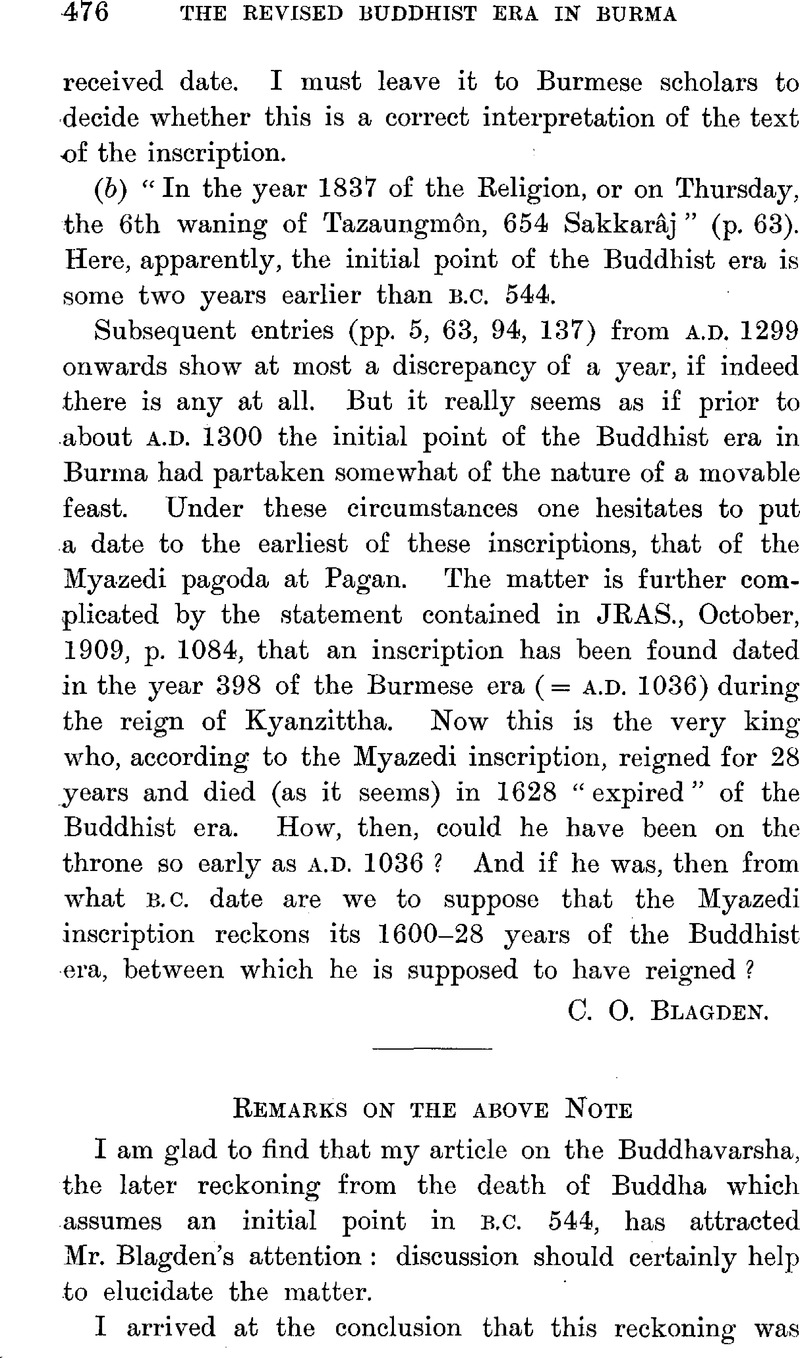No CrossRef data available.

page 477 note 1 Inscriptions of Pagan, Pinya and Ava, translations (1899), p. 97. The expression “the year (so-and-so) of the Religion” is also found on pp. 5, 9, 22, 52, 63 (No. 6), 94, 137, 167, 173, 175, 176, 183; and on p. 63 (No. 7) we have “the year 2052 of the Religion of Gautama Buddha”: we. should like to know what the originals have for “the year of the Religion”. On p. 14 we have “the year 2312 Anno Buddhae”, and on p. 16 “Anno Buddhae 2307”: is the term here Buddhavassa, or is it Jinachakka ? The dating is expressly referred to the nirvāņa in the case of the years 1986 (p. 37) and 2295 (p. 15).
page 478 note 1 The one referred to in the preceding note.
page 478 note 2 See this Journal, 1909. 1050, note 1, and Mr. Blagden's remarks above.
page 478 note 3 See loc. cit., preceding note.
page 478 note 1 See p. 19 of the book mentioned in note 1 on p. 477 above.
page 478 note 2 Report on Archæological Work in Burma, 1905–6, p. 10.
page 478 note 3 The characters of the Talaing text are described as agreeing with the date mentioned in it. But there can, I imagine, be no difficulty about accepting them equally well for a century or so later.